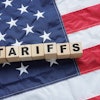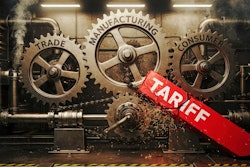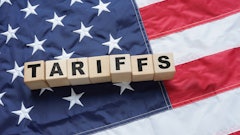
The United States recently suspended the long-standing "de minimis" tariff exemption, which allowed most packages valued at $800 or less to enter the country duty-free with minimal paperwork. The exemption, known as Section 321 of the Tariff Act, was suspended on Aug. 29. This policy change marks a major shift in U.S. trade policy, moving from broad trade facilitation toward stricter enforcement and protectionism.
The suspension was a response to a significant increase in packages entering under the program. In fiscal year 2024, 1.36 billion packages entered the United States this way, a nearly 900% increase from 2015. The trade value of these packages also saw a massive jump, from $50 million in 2012 to $64.6 billion last year.
The original purpose of the de minimis exemption, which was increased from $200 in 2015, was to reduce the administrative burden on U.S. companies and the government to speed up global trade. However, this large increase transformed the flow of global trade.
Unintended consequences of the de minimis exemption
While the de minimis exemption had the goal of streamlining trade, it created several negative consequences.
· National security and safety: One of the most significant impacts was on safety and security. The massive increase in package volume overwhelmed the ability of Customs and Border Protection to enforce import restrictions. In 2024, 90% of all cargo seizures (by cases) originated as de minimis shipments. This included:
o 98% of narcotics seizures
o 97% of intellectual property rights seizures, which totaled 31 million counterfeit items
o 77% of health and safety/prohibited items seizures, which included more than 20 million dangerous or illicit items like weapons parts
· Environmental and social impact: The exemption also encouraged harmful consumer behaviors with negative environmental and social consequences. It contributed to the rapid rise of "fast fashion" from companies that produce inexpensive, limited-use clothing, often from countries with weaker labor and environmental regulations. This promoted a "disposable society" with increased waste and pollution.
· Impact on U.S. manufacturing: The exemption hurt U.S. manufacturers by allowing foreign competitors to be subsidized by the trade policy, driving production to low-cost countries. It was often less expensive for a foreign company to ship a product directly to a US consumer from overseas than for a domestic retailer to buy in bulk, store, and fulfill the order. This has led to a significant decline in the U.S. textile industry, with labor declining nearly 20% since 2019 alone, and a projected future annual decrease of 8%.
Impact of removing the exemption
While the removal of the de minimis exemption aims to address these issues, it is not without significant trade-offs.
Impact on consumers
· Higher costs and reduced access: The policy change is considered regressive by economists and disproportionately affects lower-income U.S. consumers since lower cost goods are impacted at a higher rate. Research from Yale and the National Bureau of Economic Research (NBER) found that 73% of offshore parcel shipments went to the poorest zip codes. Consumers will directly feel the additional costs. Additional research from Flavor Cloud shows that removing de minimis increases landed costs across product categories.
· Reduced product variety: The exemption gave consumers access to niche products from around the world. Now, many smaller international retailers will likely stop shipping to the US. Larger retailers may also reduce their assortments because they won't sell enough of certain products to justify inventorying them in the United States.
Impact on businesses
· Operational and financial burden: The rapid suspension of the exemption has created a "whiplash effect" for businesses. Companies that had structured their operations around the exemption are now facing a period of costly and painful adaptation. This has disrupted demand patterns and forced changes to product assortments, potentially jeopardizing the future of some small businesses and suppliers.
· Increased complexity and costs: All shipments now require full customs clearance, which means businesses must comply with complex regulations like the Harmonized Tariff Schedule. This raises administrative costs, slows down operations and product development, and makes returns for international purchases more complex and costly.
· Disruption to shipping and logistics: The speed of the policy change has created significant disruption and costs. Since there is limited guidance on how tariff liability will be assessed, postal services in 88 countries have paused parcel shipments to the United States. This caused an 81% drop in volumes in just the first week after the change. Air freight volumes from China have dropped 60% in 2025, with rates projected to drop further.
A painful transition
The elimination of the de minimis exemption is a monumental shift. While it aims to protect domestic industry and workers and enhance national security, it comes at a significant cost to American consumers and businesses. The benefits of increased domestic competitiveness will be spread across businesses and society; therefore, it may be harder for consumers to see.
The rapid implementation of the change, without a clear reason for the accelerated timeline, has made the transition more complex and costly than it needed to be. Had the administration kept the original timeline of 2027, businesses could have prepared their supply chains, hired and trained staff, and adjusted their business models to meet the new regulatory requirements. The long-term impact of this policy change will test whether the benefits outweigh the costs of higher consumer prices and business-side friction. This is not the end of the de minimis debate, but the beginning of a new, more complex chapter in U.S. trade policy.

















